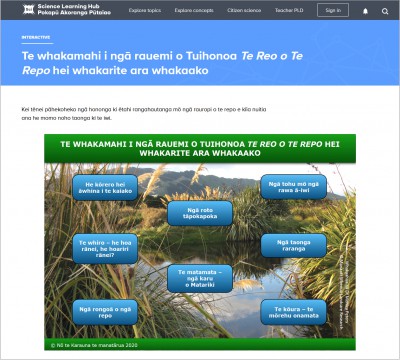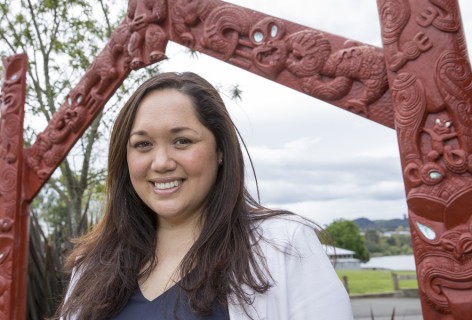
Tuihonoa Te Reo o Te Repo – online bilingual wetland educational resources
A year-long collaborative project between Manaaki Whenua – Landcare Research and the Science Learning Hub has created the new, bilingual, multimedia resources Tuihonoa Te Reo o Te Repo, to support kaupapa Māori and mainstream schools to connect with and protect these valuable ecosystems.
“With only 10% of wetlands remaining throughout Aotearoa, the main goal of the project was to create science-based resources from a Te Ao Māori perspective, that will help kura (schools) and wider whānau (local communities) reconnect with their local repo and encourage the next generation to have a relationship with them,” says Manaaki Whenua – Landcare Research project lead Yvonne Taura.
“We did this by drawing on extensive research published in the cultural wetland handbook Te Reo o Te Repo – The Voice of the Wetland. We demonstrated the importance of mātauranga Māori and western scientific knowledge, alongside educational expertise, to develop these educational resources,” she adds.
Throughout the project, the team worked closely with a selection of kura kaupapa Māori (Māori medium schools), located close to local repo across the motu (country). They also sought the expertise of a Māori advisor and translator. From this, they created Tuihonoa Te Reo o Te Repo - which includes a series of bilingual articles and teacher learning guides that can be adapted to suit both primary and secondary aged students, and interactive image maps to help navigate the site, along with short videos interviewing key wetland experts, kaitiaki, and kairangahau Māori.
“This was to ensure the resources developed aligned to the needs of kaiako (teachers), tauira (students) and wider whānau, and to inspire tauira to become kaitiaki of their own repo and improve science understanding and kaitiakitanga capability within kura,” adds Taura.
“Kaiako are desperate for resources that showcase how science and Te Ao Māori can work together in educational contexts. These resources make an important contribution to this current gap,” says Andrea Soanes, Project Manager of the Science Learning Hub, the host of these resources.
Repo are regarded by Māori as taonga and culturally significant and were relied on for sourcing kai (food) and sustenance, building materials, and rongoā Māori. Today, repo continue to play an important role in water quality, flood protection and are habitats for unique native birds, fish, invertebrates, and plants. More importantly, repo are effective carbon sinks (storing large amount of carbon that would otherwise be released into the atmosphere) mitigating the impacts of climate change.
Kura involved
- Te Kura Kaupapa Māori o Te Kōtuku – Auckland
- Te Kura Kaupapa Māori o Whakarewa i te reo ki Tūwharetoa – Taupo
- Te Kura o Tuahiwi – Christchurch
- Te Wharekura o Arowhenua – Invercargill
- Te Kura Kaupapa Māori o Otepoti – Dunedin.


